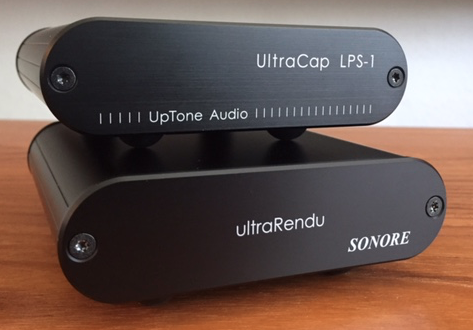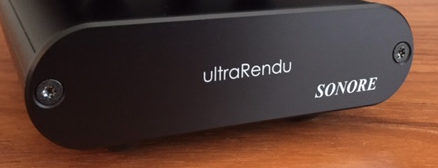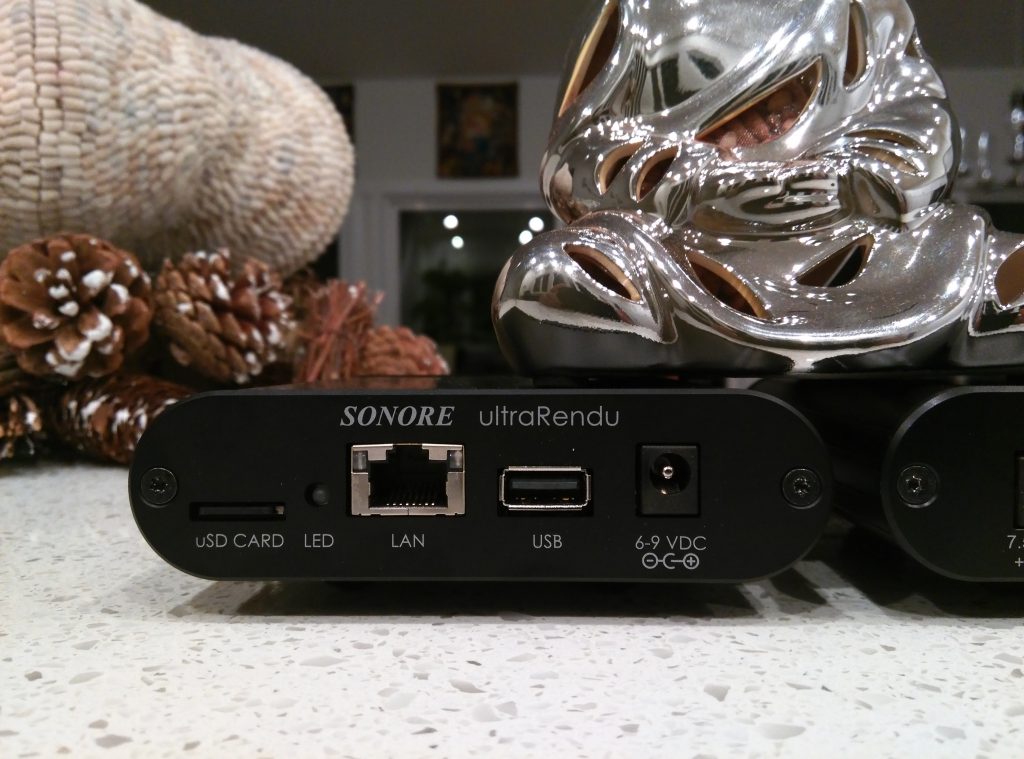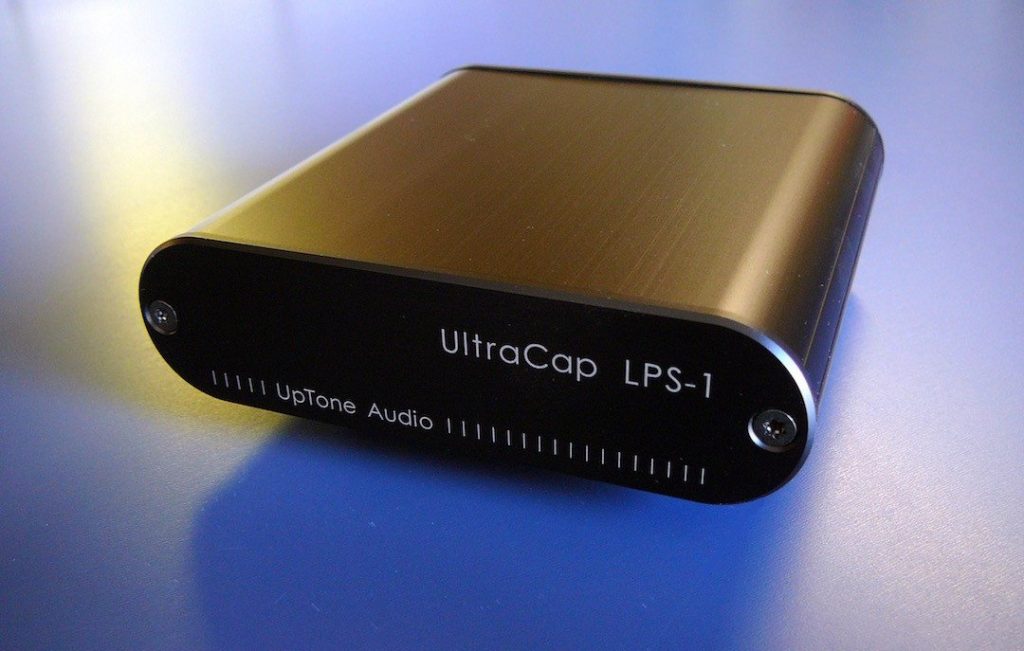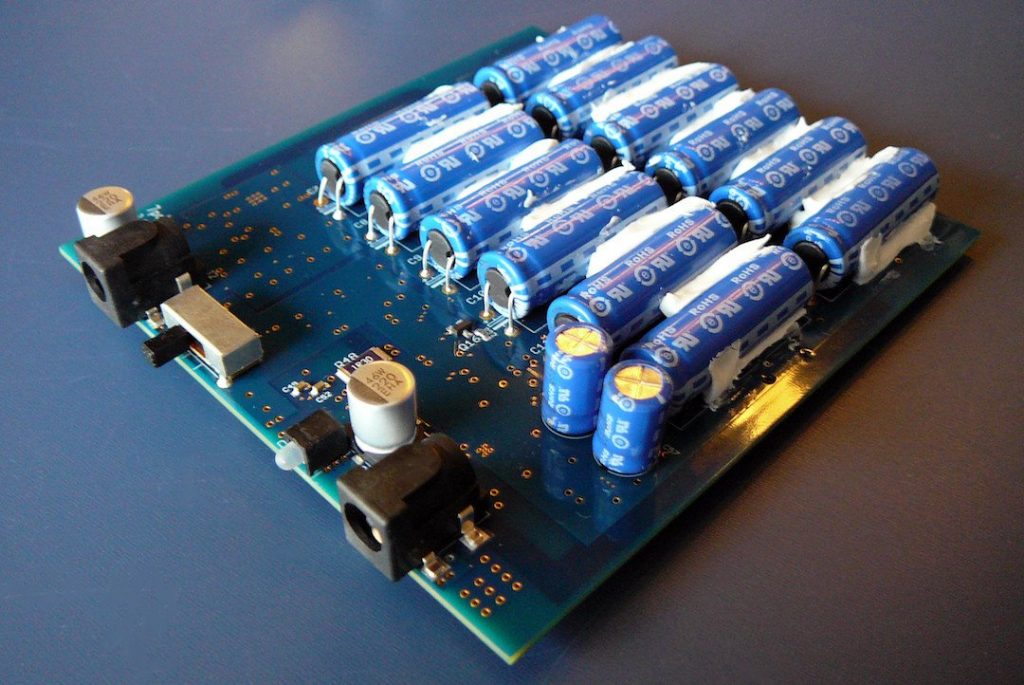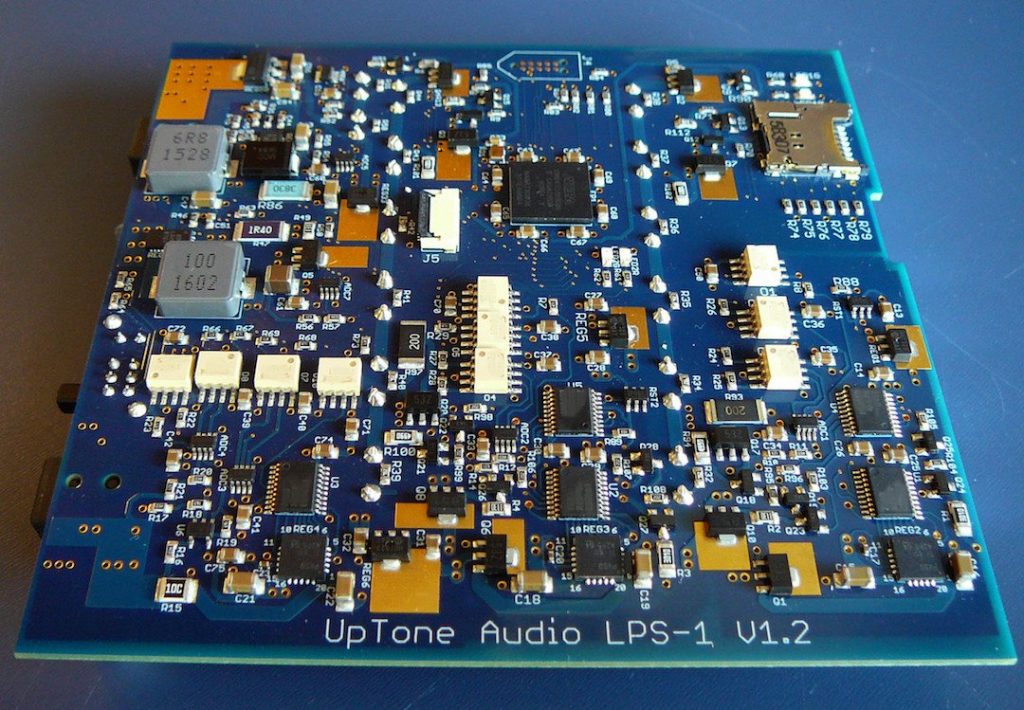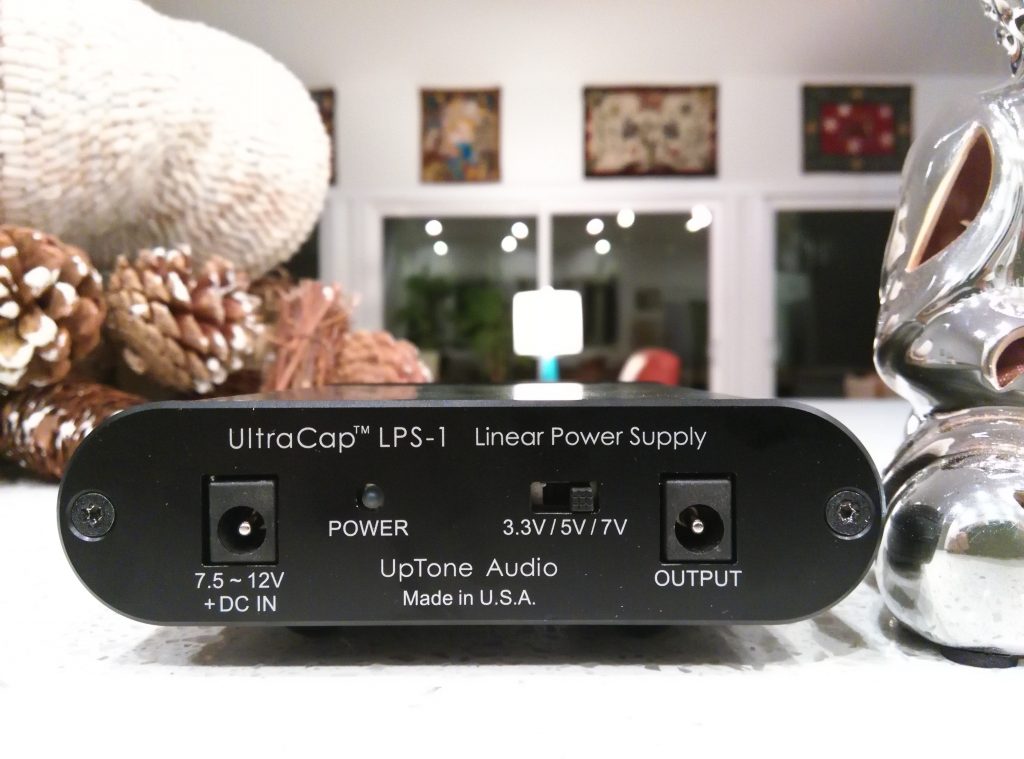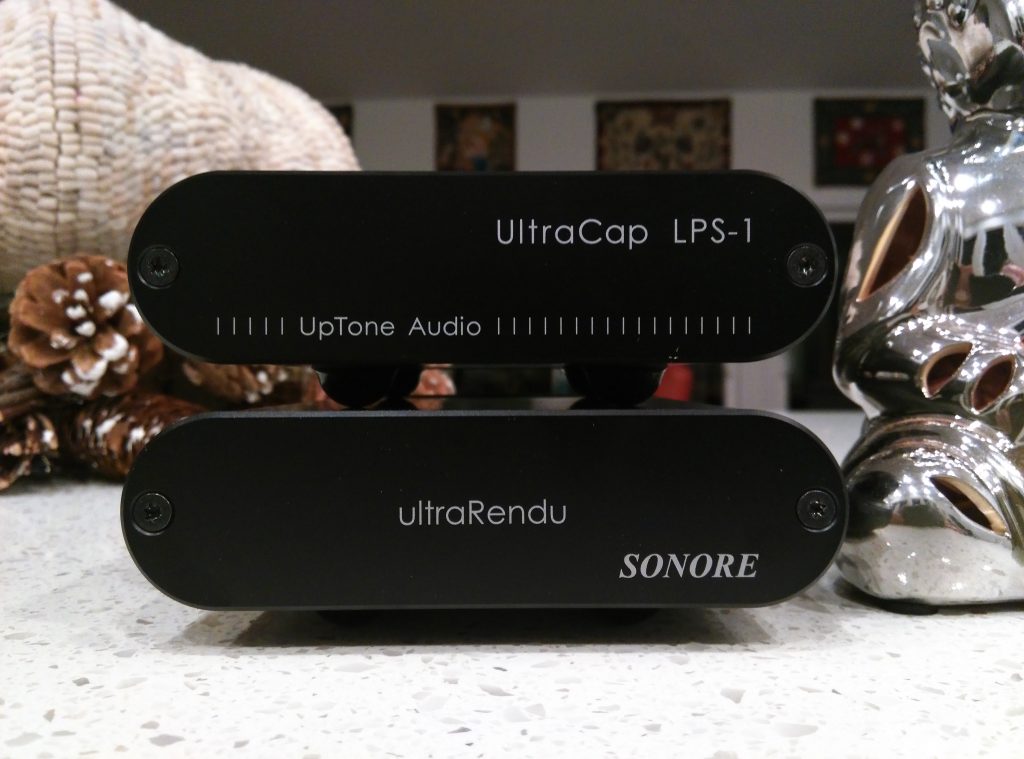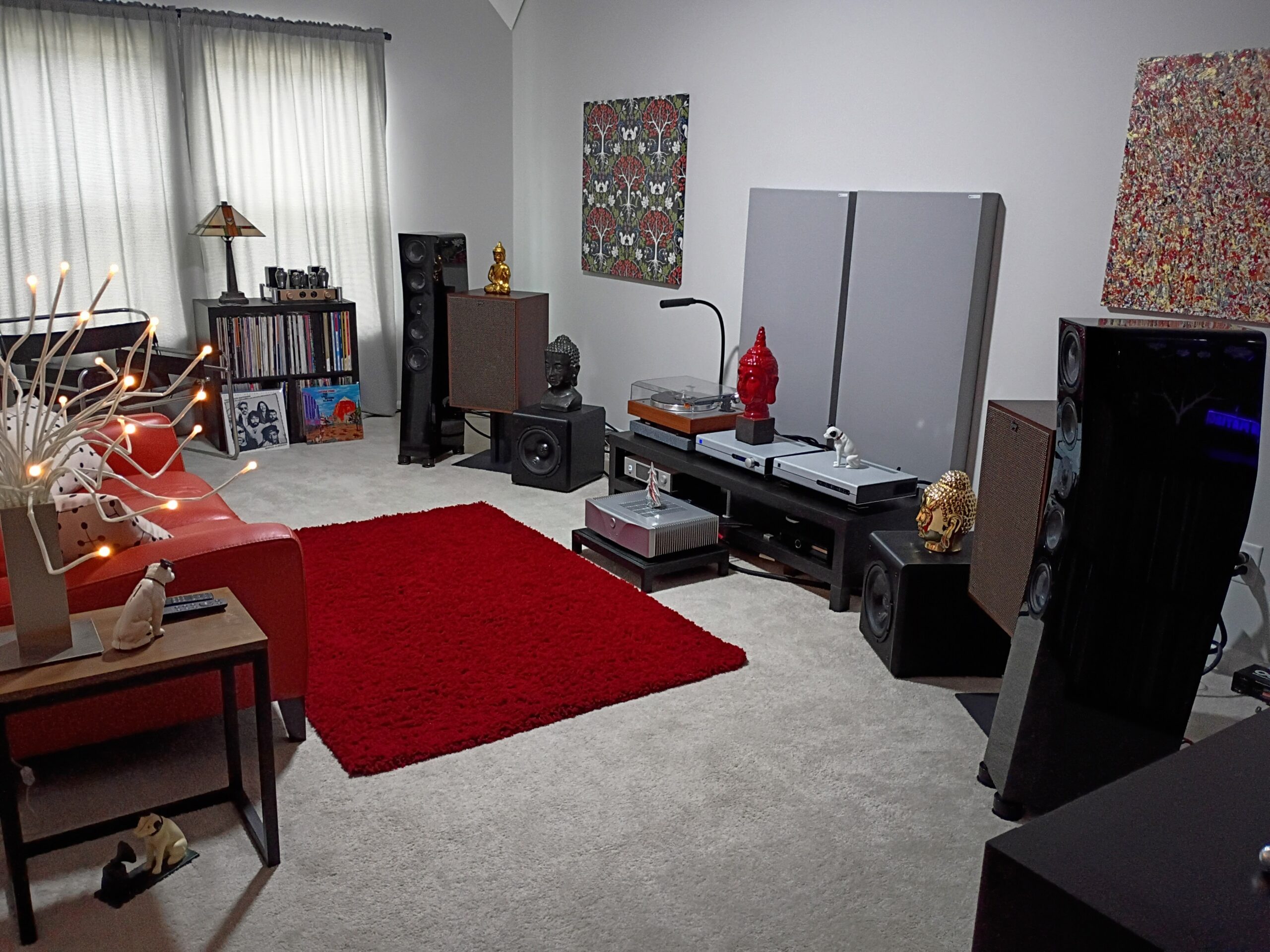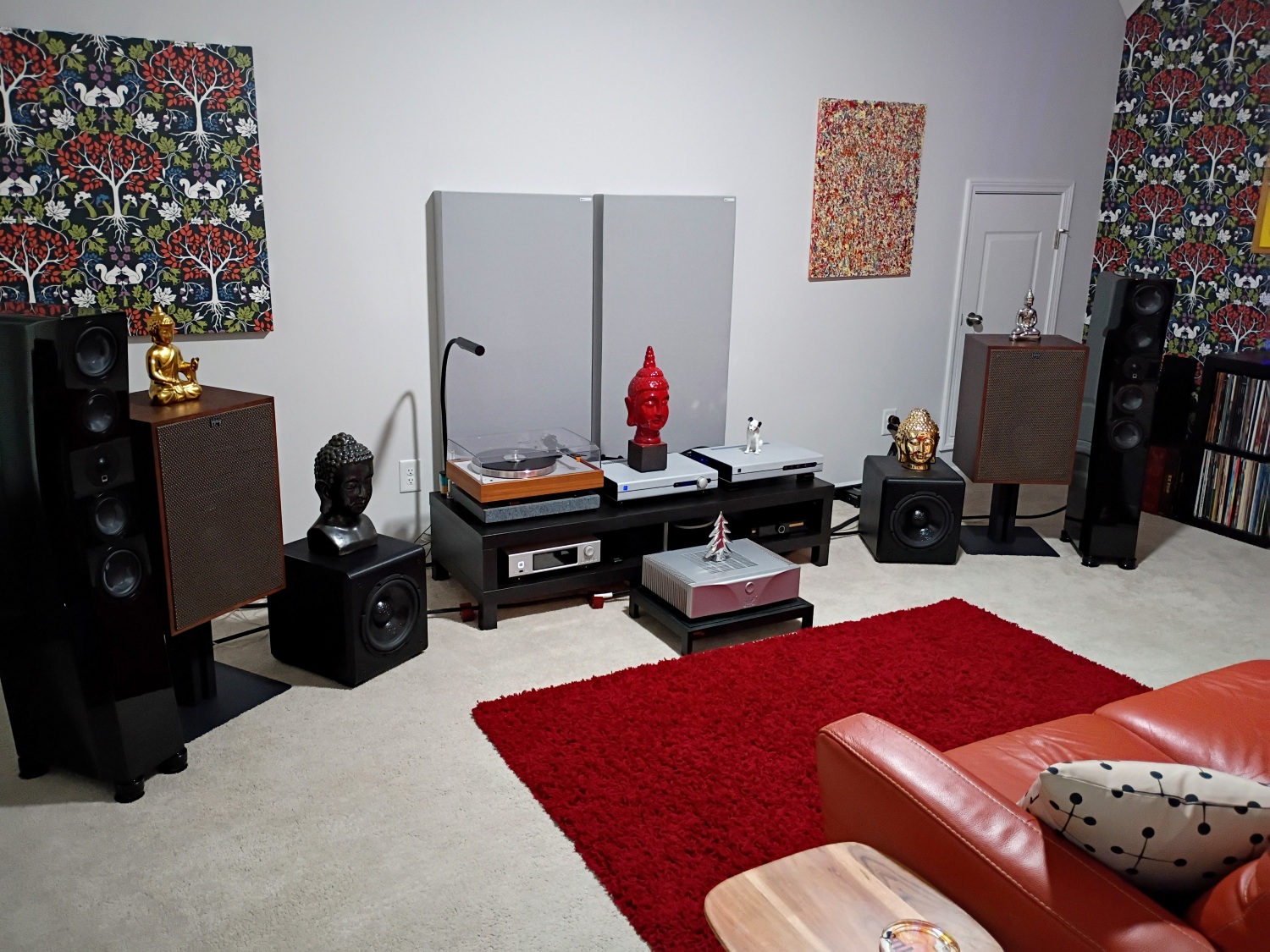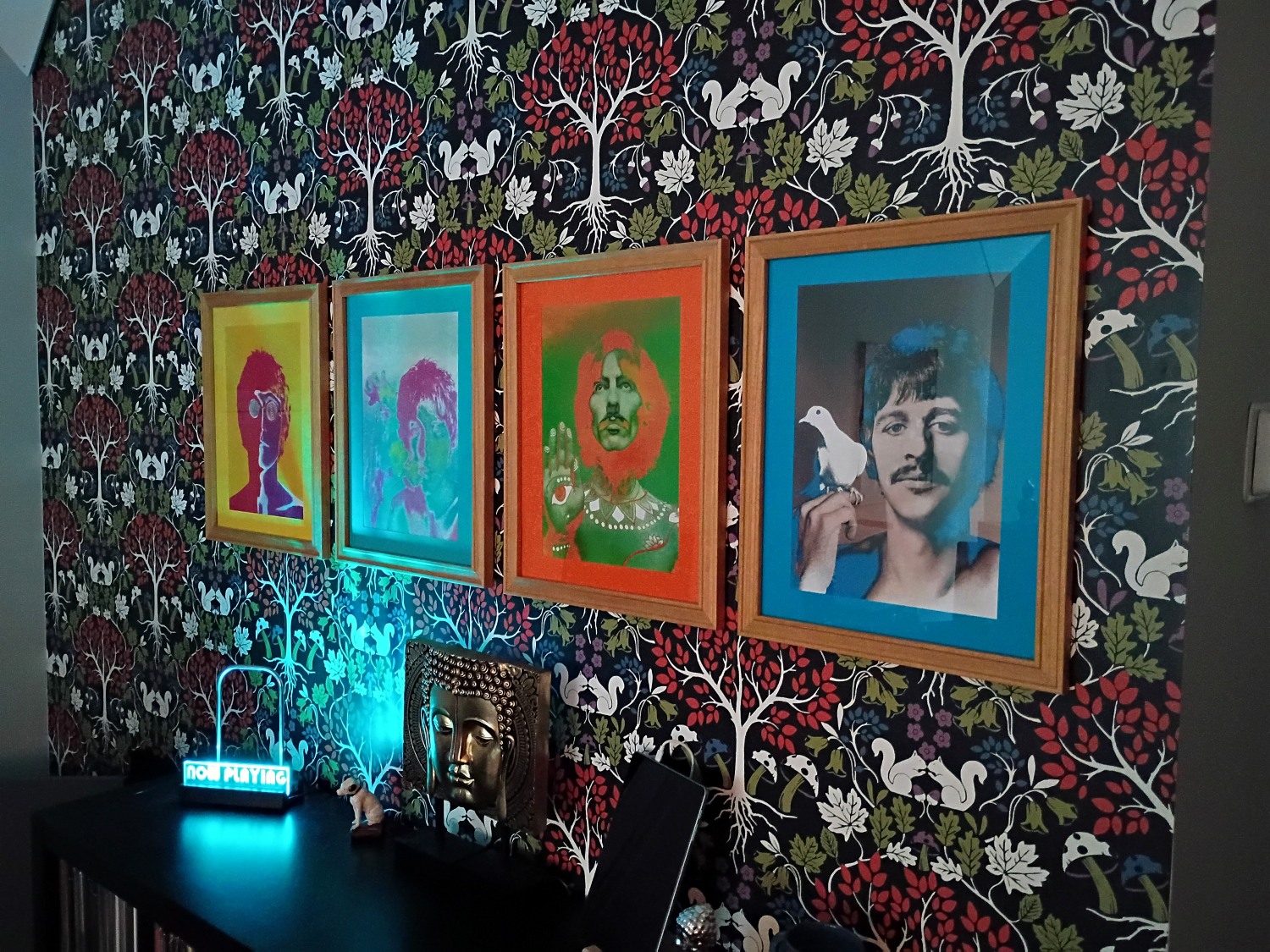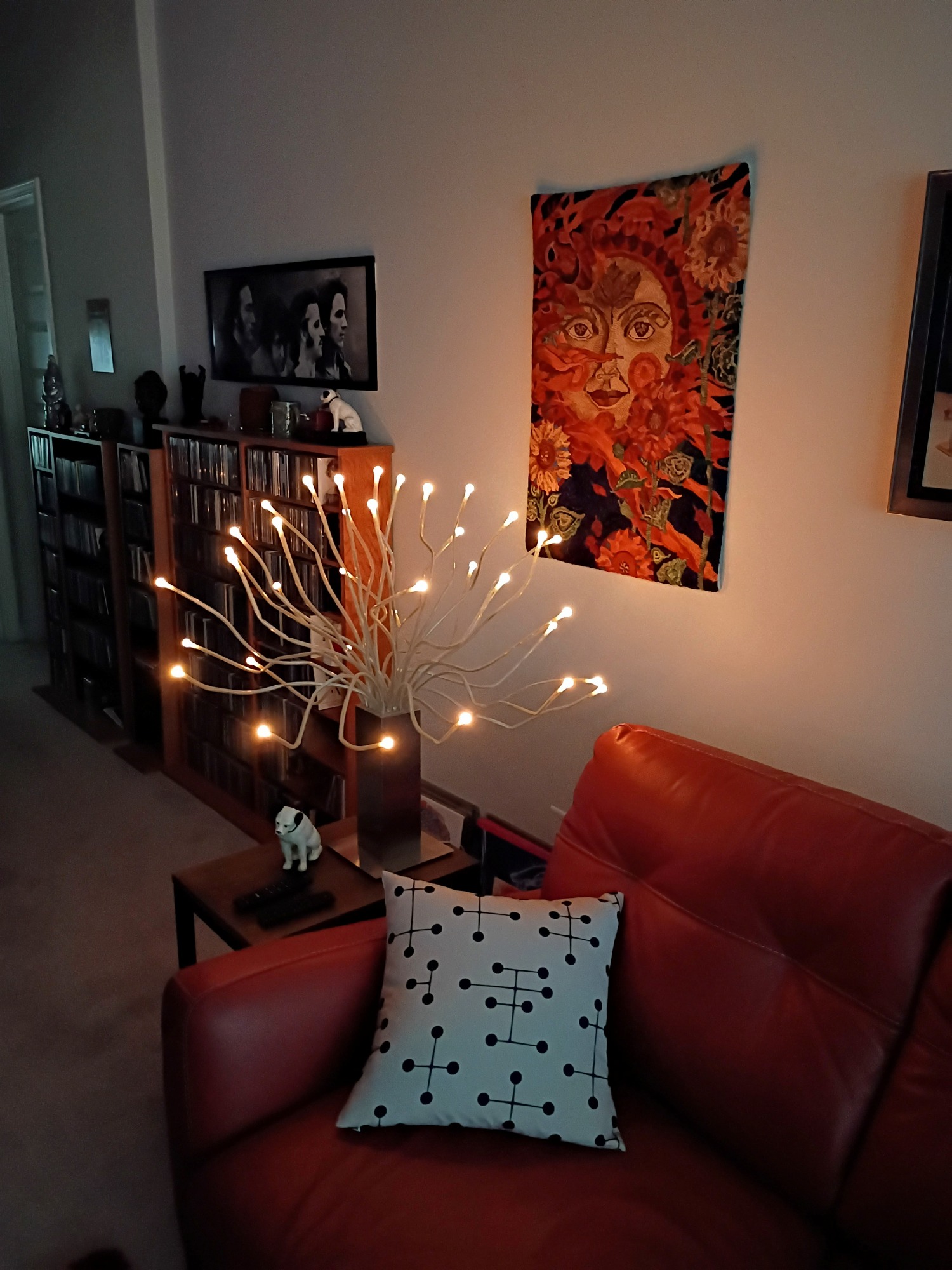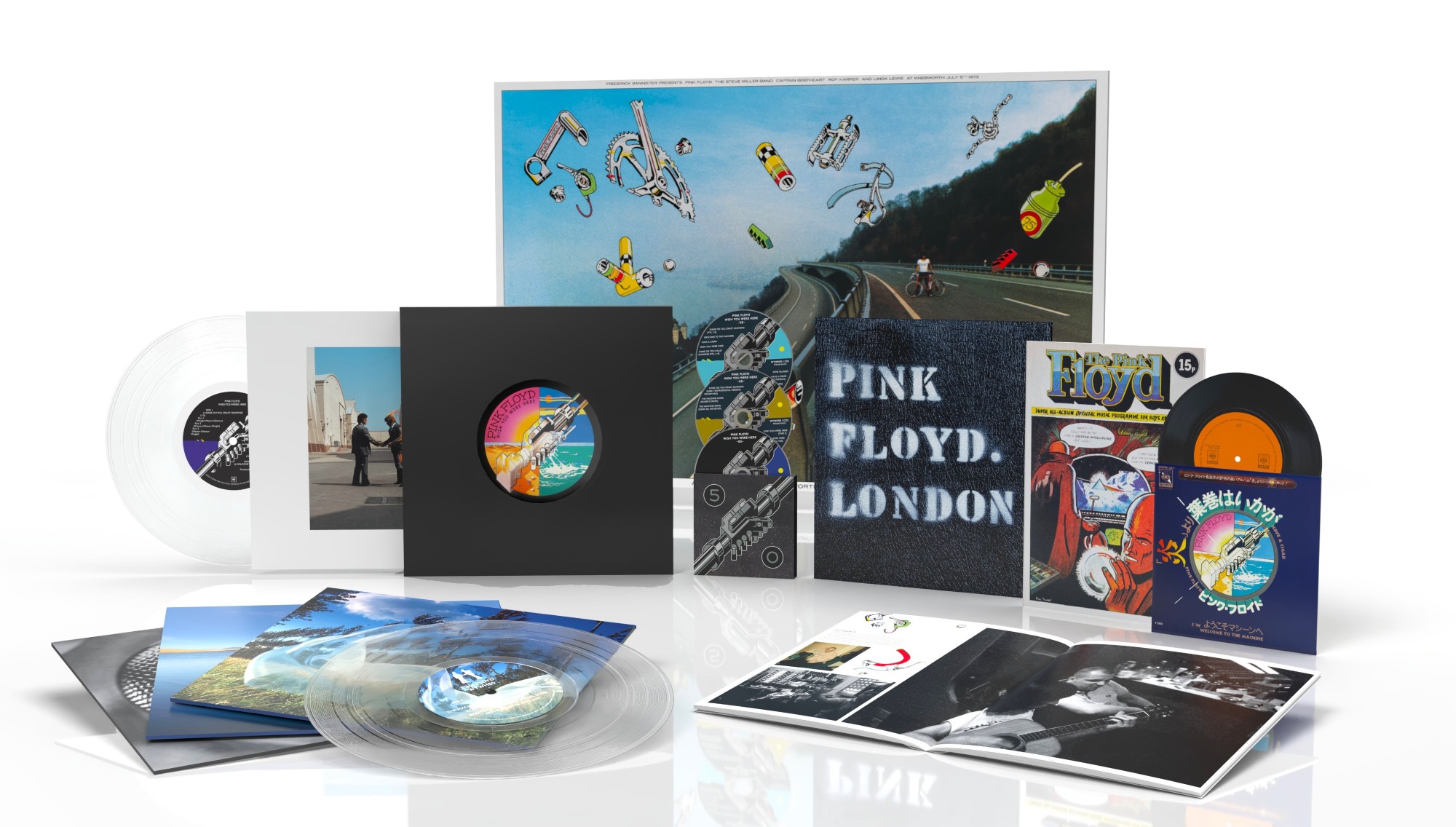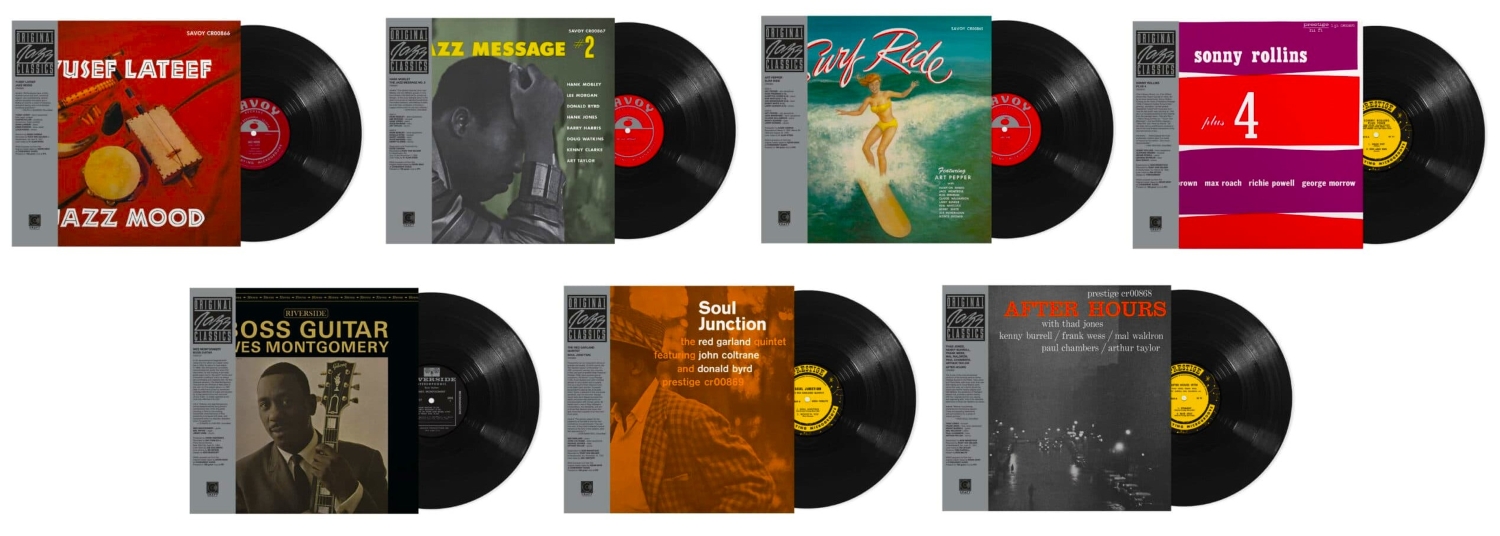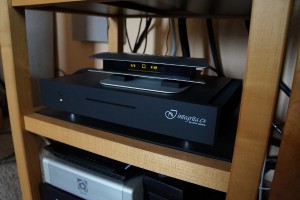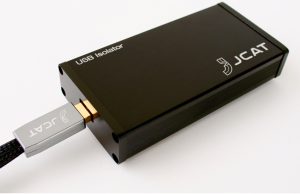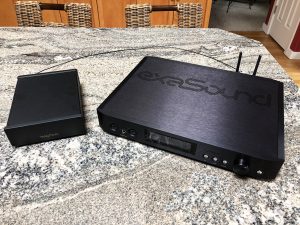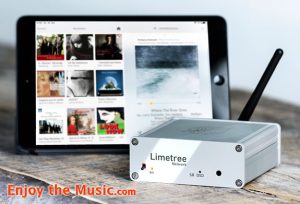Streaming is the future of computer audio. Anyone who's serious about playback of digital files knows that streaming is essential to achieve the ultimate in effortless, totally transparent playback. Think of it like this: with computer audio, there's no transport, per se; you can have the world's greatest digital-to-analog converter, but you've still gotta have some way to get the music stream to it. In the infancy of computer audio, it was all about just connecting a USB cable to your computer and in turn, your DAC.
Pretty soon, people started figuring out that a computer was not exactly the most elegant, noise-free interface to supply a signal to a world-class DAC. Or a garden variety DAC, as far as that goes. And disc-spinning was/is dead, right? (so totally untrue!) Prior to the advent of computer audio, my only context for the use of a DAC was to attach a coaxial digital cable to a CD player/transport in hopes of improving the generally abysmal sound of said CDs. I mean, I had literally thousands upon thousands of CDs that I virtually never played, not even in my car—because they just didn't move me emotionally. Music for me is all about emotion.
So, anyway, the problem is, essentially—you've got this amazing collection of music—quite possibly attached to a serious home network. How do you transport that amazing collection to your world-class DAC while avoiding the pitfalls of the noisy, problem-ridden computer environment? Macs and PCs have their own unique set of issues, and while it's true that the Mac environment is a more music-friendly one (PCs are getting there!) you still need a computer. So why not ditch the big box with all its loud fans, out-of-control power supplies and noisy mechanical drives—that's where the streamer comes in.
The guys at Sonore are leading the charge—there are big-box solutions (with equally big price tags) out there, from quite a few high-end audio companies. But Adrian and Jesus have taken a much more minimalist approach, first with the microRendu, by manufacturing a simplified, purpose-built micro computer. With a single circuit board, a minimum of inputs and outputs; no onboard power supply, and none of the other noisy, problematic peripherals. A device that could easily connect to any network, effortlessly find your amazing collection of digital files, and supply the requisite music signal via your USB cable to that world-class DAC. Let the music flow!
The microRendu did all that, and more, and when connected to a world class linear power supply like Sonore's own Signature LPS—the music flowed from my system like never before; I would never have believed that rips mostly sourced from 16 bit-44.1 CDs could be so lifelike and emotionally engaging. You can read about my experiences with the microRendu HERE and HERE. My time with the mR confirmed for me that streaming was the future, and as long as you already have a really great DAC, a major investment of your personal wealth isn't a prerequisite to experiencing exceptional sound from digital sources.
Enter the Ultra
Sonore's next-generation unit is the UltraRendu; it takes the streaming experience to a new level of transparency and intimacy, while adding enhanced features and greatly improved casework. And for only a marginally increased price tag over the original: $875 USD vs. the $640 msrp of the microRendu. More great news is that there's obviously been some cooperation going on between the folks at Sonore and UpTone Audio (whose Regen USB interface created quite a stir among computer audiophiles a couple of years ago). This review not only covers the UltraRendu, but also the UpTone UltraCap™ LPS-1 linear power supply; it retails for $395 USD and offers a level of performance that rivals designs costing three times the price. At the time of this posting, both units are selling faster than they can be produced!
The two units share a lot in common; most obviously the casework, which is identical between the two, but more succinctly—a shared design philosophy between the companies. One that encourages the use of affordable, but superb, leading-edge quality parts and materials in their design and construction. And importantly, one of minimalism and miniaturization; using only what is necessary for superb performance, while abandoning all the extraneous, noise-filled garbage and excess of full-sized computers in the smallest footprint possible.
I have to admit, I find the casework changes very, very appealing. While the ultimate goal is, of course, improved fidelity, I found the appearance and functionality of the original microRendu a little utilitarian at best. With the network and power inputs on one side, and the USB throughput exiting on the opposite side. It made cable routing a bit challenging, to say the least—and nearly impossible to place the unit so it was in clear sight for everyone to see. You've got this really great gizmo that lifts your music playback to previously unseen heights: you want it to be seen, right? Hearkens back to my old HRT DACs; that was one of the things I hated most about them—the cabling setup of the original microRendu mirrored that of the HRTs. It's really nice to be able to place the UltraRendu and LPS-1 on a shelf, in clear view, with all the cabling hidden behind them.
But the transformation from microRendu to UltraRendu is much more than simply cosmetic. The original mR was supplied with a small, rigid USB adapter that, as a design function, was intended to permit the unit to be plugged directly into the rear USB port of your DAC, minimizing any necessary cabling between the two units. And in theory, resulting in improved sound. However, my DAC at the time—the PS Audio NuWave DSD—was a half-chassis design, which didn't permit easy use of the supplied adapter, despite Adrian's insistence that using it was the preferred setup. The spacing of inputs and outputs on the rear panel was crowded to say the least. And even with everything else disconnected, with the mR connected to the adapter and to the DAC's rear-panel USB input, the diminutive microRendu was still too heavy to be effectively supported by the adapter. I was very uncomfortable with the arrangement, to say the least.
Since the original design's inception, Adrian and Jesus have become much more comfortable with current offerings in USB cable design, such that they no longer feel the signal integrity from their streamers will be compromised by the use of a short, aftermarket (read, premium) cable. Hence, the abandonment of the troublesome adapter, and the move to a larger chassis with more flexible placement options. But that's not to say that they simply took the existing microRendu innards and placed them in a bigger, prettier case.
The UltraRendu uses an entirely new circuit board; the extra space of the new case allows for a larger board with greatly improved component layout. The unit also uses an entirely new, ultra-low-noise clock; the larger board surface and case volume also has allowed for replacement of the switching regulators used in the mR with larger, lower-noise linear regulators. And the UltraRendu ships with the newest version (2.5) of the Sonicorbiter OS installed, which is a $20 upgrade for the microRendu. While the jitter was extremely low in the original mR, the improvements implemented in the Ultra contribute to an even greater reduction of noise and jitter, definitely creating the potential for a tremendous leap in performance over the baseline mR.
The UltraRendu will playback every file format known to man. Every level of PCM, every level of DSD—you name it, and the Ultra can stream it. And with certain DACs, the Ultra can even stream native DSD files. The newest OS for the Sonore line of streamers, Sonicorbiter 2.5, will playback on the fly transitions between PCM and DSD sources with no audible pops. Very few players that exist can manage that!
The UltraCap LPS-1 Provides the Juice
You've got your greatly improved streaming microcomputer ready for action; now all you need is a world-class linear power supply—but on a budget? The microRendu used in combination with the Sonore Reference LPS produced sound that was absolutely breathtaking—but the $2100 USD msrp for the pair placed a little too much of a pinch on the old wallet. For those who want a taste of the absolute, there's also the iFi low-noise switching supply for a paltry $49, and it definitely gives you a generous taste. I bought a couple of the iFi supplies for various applications; they're very low noise, and miles beyond your typical wall-wart. But the UltraRendu demands a great power supply, and that's where the LPS-1 comes in.
UpTone's website describes the UltraCap LPS-1 as "the world's first bank-switching, microprocessor-controller, ultracapacitor-based, ultra-low-noise external linear power supply." That's quite a mouthful! The LPS-1 is built around a 4-layered, double-sided circuit board that's packed with 262 parts, including (from my count) a dozen ultracapacitors. What exactly is an ultracapacitor? Again, quoting from UpTone's site: "Think of ultracapacitors (technically "electric double-layer capacitors" and often called supercapacitors) as a cross between a battery and a regular storage capacitor."
Ultracapacitors offer high energy storage density: the LPS-1 provides a total of 60 Farads of supercapacitor storage. Ultracapacitors by nature are very low ESR (equivalent series resistance); even lower than batteries, and they can discharge energy very, very fast. I always thought that battery power supplies were supposed to be the audiophile ultimate! Ultracapacitors also charge very quickly, and can be charged/discharged literally millions of times over their lifetime. I don't know what that translates into in terms of the usable life of the LPS-1; "millions" seems like an excessive amount, and should provide years of service in its intended purpose. At the very least, the LPS-1 comes with a three-year warranty, which is a superb level of support from a small company like UpTone Audio.
The LPS-1 by nature is very low noise, but UpTone insists that low noise is not the primary focus of the device; a device like the UltraRendu is inherently low-noise by its design. Rather, there are two main advantages of the LPS-1's singular design: firstly, the LPS-1 provides a level of power transfer speed that battery supplies can only dream of. And an ultra-low output impedance over a really broad bandwidth; most traditional linear power supplies require large banks of filter capacitors to smooth performance, and that definitely impacts the supply's speed and impedance. Secondly, the nature of the LPS-1's design provides 100% galvanic isolation from the AC mains at all times. While one of the banks of ultracapacitors is supplying output power, the other bank is charging; the output is never connected to the bank that's recharging, which insures a silent, smooth transfer of power to your connected device.
The sophisticated power-transfer design of the LPS-1 completely blocks any AC current leakage; this isolation provides a low-noise, low-impedance power transfer that's completely free of any ground loops. As everyone knows, elimination of ground loops can easily be one of the most vexing problems in audio playback. And with the typical, convoluted, multiple-power supply setups employed by most computer-audio based systems, isolating a ground loop can be a real bugger of a problem!
The LPS-1, while appearing to pretty much be optimized for use with the Rendu series of streamers, does provide an additional level of flexibility to the owner. The back panel sports a switch that will allow the unit to provide power for 3.3V, 5V, or 7 Volt systems. Most power supplies in this price range tend to only offer a single voltage selection, or can be purpose-made for a specific voltage level. Having the flexibility to provide a superior voltage source to a variety of devices is a definite plus!
Use and Listening Tests
Between the microRendu and the UltraRendu, I've had a Sonore streamer in some incarnation of my system for about a year now. I keep the Rendu powered on 24/7, and like any computer device or network, there's the occasional glitch or hiccup. Where the router drops the connection, or maybe the power flashes—for whatever reason, things occasionally don't always respond as they ought to, including the Rendus. So I've developed a routine when using the UltraRendu for the first time each day that works first time, every time.
I use my android phone as a smart remote with my stereo system; it easily allows me to control the various DLNA applications that manage my music collection (like Bubble DS and MinimServer), as well as accessing content via Roon or Tidal. I also have a link on my browser to Sonore's web page where I can access my unit's various settings, so first off each day, I reboot the Rendu. This takes about 45 seconds, after which I then reset my streaming preferences, which most often is DLNA-based. I then reboot my phone; following this routine always results in a perfectly functional connection with whatever application I happen to be using at the moment. All these devices in our lives are seemingly so temperamental, and I just can't begin to tell you how rewarding it is to just start pressing buttons and the music plays every time!
I have to be straight up with you—I didn't think I'd ever have another streaming audio system in the Basement that would rival the microRendu/Sonore LPS combination. The Sonore LPS was a perfectionist product that obviously lifted the lowly mR above any shortcomings it might have possessed, but the time soon came for it to go to another destination. It was replaced in the system by the Channel Islands Audio LPS; and while the CIA unit was quite good for roughly $350 USD, I just couldn't help but feel that some of the magic was missing from my subsequent listening sessions with the microRendu. No Sonore LPS = sad day at the Basement. Well, at least—if for a relatively short time—I did get to experience the kind of transparency in sound that rich audiophiles must have to muddle through on a daily basis!
However, since the arrival of the UltraRendu/LPS-1 system, I respectfully submit for your consideration: it was wrong of me to despair! And here's the part of the review that I'm having a particularly difficult time with in quantifying my results. The mR/Sonore LPS combo has been gone for a few months now, but all I have to do is pop on any of a hundred (maybe a thousand!) music choices to realize that the sound I'm currently getting from the UltraRendu/UpTone LPS-1 system is at least the equal, and maybe even slightly better than that seemingly untouchable combo. And that surprisingly good improvement in sound retails at just a smidge over half the price of the mR/Sonore LPS set.
There's a duality of benefits presented here: More and Less. More of everything you want from audio; more transparency and intimacy in the sound presentation; gobs of detail, without being overly analytic; an overall purity of sound that so closely approaches the analog equivalent (the LP, typically) that I find it almost impossible to fault the digital playback in any way. And that's typically listening to 16/44.1 rips of CD sources. And, of course, there's Less of everything you don't want. Like noise. No clicks and pops, no unexpected scratches from your treasured LPs. And no hum or any electrical noise of any kind—if you read my original mR review, I had a noise problem with the first unit Sonore sent me that just about drove me crazy as I tried to isolate the source. That was obviously a fluke in the original review sample; there's been no similar issue this time around!
I know that whenever you reach this level of quality in music playback there's an inevitable tendency to heap superlatives on the item(s) receiving your admiration. When in reality, the improvement in playback is probably only splitting hairs between what you had and what you now perceive to be clearly superior. Is the improvement of night-and-day significance? Will double-blind audiences chose it every time? Does the increase in cost justify its acquisition?
Hold on just a minute—this system is just a touch over half the price of the system I previously regarded so dearly. Justify the cost? It's an unbelievable bargain! It sounds magnificent, it's the definition of form and function, it's pretty to look at—and it's a technological tour-de-force. The brilliance of everyone involved at both Sonore and UpTone is made manifest here: the UltraRendu/LPS-1 pairing is their Mona Lisa. The problem with quantifying my results is that I no longer have any of the previous units on hand for direct comparison, with only my memory serving as the gauge of improved performance. Is the Ultra that much better than the microRendu? Undeniably so, but if you already own the baseline mR with a really great power supply, you're probably getting 85-90 percent or so of the performance of the Ultra/LPS-1 combo. In high-end audio, it's that elusive ten-percent or so of performance gain that everyone is in pursuit of and has them digging into their wallets in hopes of finding it.
What does the LPS-1 bring to the equation? It's obviously substantive; while the redesigned UltraRendu definitely deserves a lot of the credit for the over-achievements here, adding a really great power supply is essential to getting legendary performance. The LPS-1 is undeniably that really great power supply, and a runaway bargain at just under $400 USD. While I'm not letting either of these beauties get away from me this time, I'd almost (for giggles) like to hear the mR powered by the LPS-1, just to see what my impressions would be.
My entire life, I've been a complete gear-head and hardware freak; if any particular piece was going to occupy a place in my listening room, the only thing it better add (along with magnificent sound) would be its stunning good looks. I've always been focused on keeping the listening environment as free from noise (other than what some might consider the "noise" coming from the speakers!) as possible. With my first forays into computer-based audio, I knew that was going to be problematic at best. How in God's name could I possibly feature the thought of having a noisy, fan-ridden big box, or even a laptop—in the listening room?
The UltraRendu, in combination with the UpTone LPS-1, has cracked that very vexing nut. They've taken the pain away from being forced to have a computer present in the listening room, while at the same time, elevating my level of enjoyment remarkably. Each of these units is very highly recommended on their individual merits; as a pair, they're a complete no-brainer—and a tremendous bargain. Go ahead and get in line, it'll definitely be worth the wait!
Sonore UltraRendu
Retail: $875 USD
Sonore
UpTone Audio UltraCapTMLPS-1 Linear Power Supply
Retail: $395 USD
UpTone Audio
All photographs either taken by Tom Gibbs or supplied by the manufacturers




